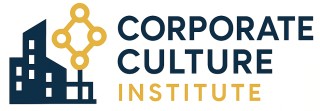
Understanding the Role of Communication in Corporate Culture
The Essence of Communication in the Workplace
In the realm of corporate culture, communication serves as the backbone, shaping relationships and fostering a cohesive identity within organizations. Whether through verbal exchanges, nonverbal cues, or written correspondence, effective communication is essential for a thriving workplace. This chapter delves into the various types of communication and their roles in establishing a strong corporate culture.
Types of Communication and Their Importance
Understanding the different types of communication is crucial for navigating the corporate landscape. From public speaking to small group discussions, each form plays a pivotal role in daily operations. Nonverbal communication, often overlooked, can convey powerful messages and influence workplace dynamics. Developing communication competence involves mastering these diverse forms, which are often covered in textbooks and communication editions from esteemed publishers like Oxford University Press.
Active Listening and Interpersonal Communication
Active listening is a cornerstone of interpersonal communication, facilitating meaningful interactions and reducing misunderstandings. It requires full attention and a genuine effort to understand the speaker's perspective, which is vital for building trust and respect among colleagues. This skill is frequently highlighted in resources like those by Ronald Adler and George Rodman, emphasizing its role in enhancing communication competence.
Models of Communication and Cultural Differences
Models of communication provide frameworks for understanding how messages are transmitted and received. These models consider factors such as cultural differences, which can impact how communication is perceived and interpreted. Recognizing these nuances is essential for fostering an inclusive and effective communication environment in diverse workplaces.
For a deeper dive into the benefits of effective communication strategies, you can explore this comprehensive guide.
Barriers to Effective Communication
Challenges in the Communication Landscape
In today’s multifaceted corporate environment, barriers to effective communication are apparent and may hinder the flow of information. For anyone involved in organizational communication, understanding these hurdles is essential for overcoming them.
One significant barrier is cultural differences. Communication in the workplace is greatly influenced by an individual's cultural background. These differences affect language, nonverbal communication, and the overall interpretation of messages. Misunderstandings commonly arise when cultural context is not considered, impacting group communication dynamics.
Another crucial aspect involves communication types, where failures often arise not from what is communicated, but how. Verbal, nonverbal, and symbolic language need consistency and clarity; varying interpretation has the potential to cause miscommunication. Listening is equally essential. The concept of active listening fosters better relationships, as it encourages understanding beyond just hearing words.
Technological influences increasingly regulate workplace communication as many organizations rely heavily on digital means. While technology enhances reach, it also presents barriers such as a lack of personal touch and potential overload of information, challenging employees’ communication competence.
Lastly, inadequate interpersonal communication skills can prevent effective dialogue. Individuals sometimes lack the ability to express themselves or misjudge how their message will be received by their audience. Workplace competence, then, requires both speaking and listening skills, blending them appropriately in varied scenarios such as small group meetings or public speaking.
As the business world spans globally, understanding and addressing these barriers is pivotal. In navigating through these communication challenges, organizations can unlock critical pathways to success. For a deeper dive into how the global context affects communication practices, explore the dynamics of the global entrepreneurial movement.
Strategies for Enhancing Communication Skills
Refining Interaction Skills for Effective Exchanges
In the realm of corporate culture, honing communication skills, both verbal and nonverbal, is essential. Effective communication not only requires delivering speeches or messages clearly but also involves active listening to understand the perspectives of colleagues from diverse backgrounds.
- Active Listening: This involves engaging fully with the speaker and acknowledging their message. Active listening enhances interpersonal communication and is a crucial component in any communication chapter focusing on small group dynamics and public speaking scenarios.
- Nonverbal Communication: Often, the message conveyed through body language, facial expressions, and gestures can speak louder than words. Understanding these nonverbal cues can greatly improve communication competence, especially in small group settings.
- Small Group Interactions: Engaging effectively within a group requires understanding group communication dynamics. This competence can be acquired through practical experiences as well as theoretical insights from textbooks commonly published by university presses like Oxford University.
Reading materials, such as communication editions from renowned authors, can broaden one's understanding of communication models and cultural differences. While textbooks provide the foundational theories, practical application, such as participating in discussions and practicing speeches, solidifies these concepts.
For those interested in deepening their knowledge, exploring the streamlining of HR document management can provide further insights into creating a more cohesive corporate culture. Emphasizing both good interaction skills and access to these resources will significantly enhance the communication practices within your organization.
The Impact of Technology on Workplace Communication
The Intersection of Technology in Corporate Communication
In today's rapidly evolving corporate landscape, technology has become an integral part of communication practices within organizations. The impact of technology on workplace communication cannot be overstated, as it continues to reshape how information is shared and how teams collaborate. Various types of technology have been instrumental in enhancing communication efficiency. Email, instant messaging, and video conferencing are just a few examples of tools that allow teams and larger groups to maintain open and active communication, despite the geographic differences inherent in modern workplaces. These tools not only facilitate the quick exchange of information but also help manage communication in small groups and even when engaging in public speaking. However, while technology offers numerous advantages, organizations must remain vigilant regarding potential pitfalls. Nonverbal communication, which is essential for conveying tone and emotion, can be lost in text-based messages. Similarly, speeches delivered via video conferencing may not have the same impact as in-person meetings, as nuances in body language may be less perceptible. To navigate these challenges, developing communication competence, especially in digital mediums, is crucial. Active listening, a critical component of interpersonal communication, becomes even more important in virtual environments. Individuals must pay close attention to written cues and respond appropriately, ensuring that messages are both received and understood. Incorporating best practices for technology-enabled communication involves understanding the cultural differences that may affect communication styles. By recognizing the significance of nonverbal cues and the diverse types of verbal language, professionals can foster effective and inclusive communication environments. As we adapt to these technological advancements, it's essential to regularly assess and refine our communication strategies. Published resources, such as textbooks and communication chapters from university press publications, offer valuable insights into the evolving nature of corporate communication. Moreover, frequent review of communication models and frameworks can provide leadership with the tools needed to evaluate the effectiveness of their communication strategies, ensuring alignment with organizational goals and improving group communication dynamics. Technology is not just a tool but a driving force in shaping communication identity within corporate culture. By leveraging it effectively, organizations can enhance their communication capabilities and build stronger relationships both internally and externally.The Role of Leadership in Fostering Open Communication
Leadership's Influence in Communication Exposure
The dynamics of corporate culture are significantly shaped by leadership, especially in terms of fostering open communication. Effective leaders act as role models for essential communication principles, demonstrating the importance of both verbal and nonverbal communication. By actively engaging in listening and encouraging interpersonal communication, leaders create an environment where employees feel valued and understood. Leaders can also leverage their position to break down barriers to communication, ensuring that all types of communication channels are accessible and clear. This could mean improving group communication within small groups or facilitating effective public speaking and persuasive speeches across larger team meetings. The competence of a leader in communicating, therefore, becomes crucial in maintaining healthy workplace relationships. To enhance their impact, leaders should encourage active listening among their teams. By doing so, they can ensure that every team member's voice is heard and valued, thus promoting a culture of inclusion and shared identity. Additionally, understanding cultural differences and adopting models of communication that respect these nuances—such as those found in textbooks by recognized authors—can significantly improve communication outcomes. Moreover, leaders should stay informed about communication research and developments, such as those published by university presses. Books by recognized authors in the field, including those similar to George Rodman or from established institutions like Oxford University, provide valuable insights into group communication and communication edition competencies. Finally, leadership involves crafting a communication strategy that evaluates both its effectiveness and the role of technology within it. As highlighted in previous discussions, technology plays a critical role in shaping modern workplace communication. It is essential for leaders to continuously assess and adapt their strategies to incorporate these advancements, ensuring the organization's communication model remains robust and forward-thinking.Measuring the Effectiveness of Communication Strategies
Evaluating the Effectiveness of Workplace Interaction Tactics
The emphasis on measuring the effectiveness of communication strategies in the corporate realm has grown substantially with the evolving dynamics of workplaces. Good communication is often highlighted as essential and underpins successful corporate culture by nurturing productive relationships and fostering an inclusive atmosphere. It's crucial to determine if the strategies in place are truly facilitating effective dialogue. Consider these key areas when assessing communication modes:- Active Listening: This goes beyond hearing words. It's about understanding the speaker's language, including nonverbal cues, and validating their point of view. Cultivating these skills in employees can enhance interpersonal communication and group collaboration.
- Communication Competence: Evaluate whether employees feel competent in various situations—be it public speaking, small group discussions, or delivering persuasive speeches. Gauge their ability to fluidly navigate different types of corporate interactions.
- Role of Nonverbal Communication: Nonverbal signals play a critical role in delivering messages. Analyze how well these are perceived and interpreted within the organization, as highlighted in numerous university press publications like Oxford's.
- Inclusive Approach to Speech Styles: Recognizing different speech and identity preferences adjusts communication to be more inclusive. This attention to varied cultural differences ensures a broader acceptance and understanding across the organization.
- Use of Technological Aids: Technology, detailed in prior analyses, can be both a barrier and an enhancer. Evaluate how tools are used to streamline communication, especially within small groups, and whether they align with the organization’s goals.













